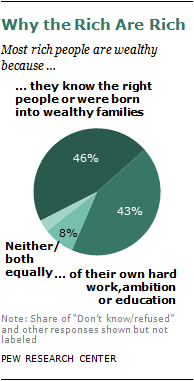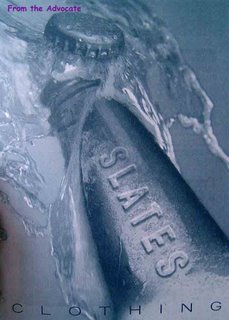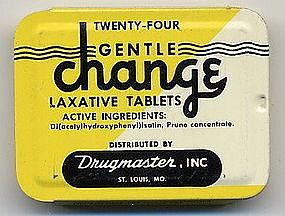Cross-posted at Caroline Heldman’s Blog.
In early 2009, I had dinner with a prominent, conservative political operative. He calmly (and accurately) predicted that the 2010 mid-term election would see the largest Republican gains in half a century. He then leaned in and half-whispered, “but you haven’t seen anything yet. Just wait until 2012 .” I pressed him on specifics, but he would only allude to a campaign that would rewrite the political rules. With the revelation that a centralized, state-by-state voter suppression campaign is underway, I now know what he was alluding to.
The New Voter Restriction Laws
In 2011, a sudden wave of state-level voter restrictions in Republican-controlled states has swept the nation, just in time for the 2012 election, with 19 new laws and two executive actions on the books. Some of these laws reduced or eliminated early voting, while others did away with weekend voting and same-day registration. All 50 states require voters to prove their identification at the polls, but 17 states have pending or approved law mandating government-sponsored IDs in order to vote, despite the fact that approximately 11% of citizens don’t have such IDs (for various reasons). For some Americans, even those with ample resources, getting an ID can be quite a challenge (even for nuns!).
The Brennan Center for Justice estimates that 5 million eligible voters face disenfranchisement from these new voter ID laws.

Voter ID laws disproportionately affect Black Americans, Latino/a voters, U.S. citizens who were born in other countries, elderly people, people with disabilities, transgendered people, and students — all of whom are less likely to have the required ID for different reasons. A 2006 Brennan Center study finds that 25% of Black , 16% percent of Latino/s, and 18% percent of elderly Americans lack the necessary ID. Some on the left have accurately likened these new laws to Jim Crow Era poll taxes because the expense involved in obtaining an ID place a disproportionate burden on many groups that have been historically disenfranchised.
What do all of these groups have in common? With the exception of elderly Americans who have shifted Republican in recent years (although they still comprise the most active voting group for Democrats), the Americans who will be disproportionately affected by voter ID laws all vote overwhelmingly Democratic.
There is little doubt, then, that voter ID efforts will affect the upcoming presidential election. The states that have restricted voting rights also have 185 Electoral College votes, two-thirds of the 270 needed to win the presidency. Out of the twelve battleground states in the upcoming election, five have already restricted voting rights and two others are considering new limitations.
Who’s Behind the New Laws?
The corporate organization behind the new spate of voter ID laws is the American Legislative Exchange Council (ALEC), which claims to be a “nonpartisan public-private partnership” between legislators, the private sector, and the general public to promote “principles of free markets, limited government, federalism, and individual liberty.” (How is requiring government-issued ID to vote a promotion of “limited government” and “individual liberty”?) In actuality, ALEC is a hyper-conservative Republican organization that receives 98% of its funding from corporate entities, such as Exxon Mobil, Atria (formerly Phillip Morris tobacco), AT&T, Coca-Cola, and the Charles G. Koch Charitable Foundation.
And ALEC is more than just a corporate lobbying organization. They work directly with legislators (who are ALEC members) to craft model legislation that is then introduced in statehouses across the country without acknowledging that corporations drafted the bill. ALEC drafted model ID voter legislation, and every single new voter ID law was passed with ALEC member involvement. ALEC’s policy agenda for 2011 included bills to deregulate polluting industries, privatize education, eliminate unions, and voting restrictions.
David and Charles Koch, two brothers who have quietly promoted their radical, free-market agenda with $100 million in contributions to conservative causes, including bankrolling Scott Walker’s election and subsequent recent assault on public unions in Wisconsin, have long ties to ALEC. Koch Industries has been one of a select group of members on ALEC’s governing board for nearly two decades, and from what little financial information is available, the Koch contribution to ALEC likely exceeds $1 million. The lead lobbyist for Koch Industries formerly chaired ALEC. Koch brother involvement in voter ID laws should be of particular interest for the Occupy Movement considering that David Koch’s project, Citizens for a Sound Economy, spearheaded the effort to repeal Glass-Steagall that enabled banking institutions to gamble in securities and tank the economy in 2008.
The purpose of new voter ID laws is to demobilize certain portions of electorate who are more likely to vote for Democrats, a goal laid out by ALEC founder, Paul Weyrich many decades ago who stated that “I don’t want everybody to vote… Our leverage in the elections goes up as the voting populus goes down.”
In short, this is a corporate-sponsored attack on democracy, spearheaded by Republicans intent on disenfranchising certain groups in the electorate in order to gain political control.
But Don’t We Need to Enhance Voting Security?
No. The voter ID movement is based on a bald-faced lie that voter impersonation is an issue. It’s not. As the DNC humorously notes, a person is 39 times more likely to be struck by lightning than to engage in voter impersonation, and 3,600 times more likely to report a UFO.

This voting fraud figure is based on a Bush Administration investigation into the matter that involved only 70 prosecutions nationwide, some of which were honest mistakes.

The Real Problem: Voter Turnout
We don’t have a voter impersonation fraud problem in the U.S., but we do have a voter turnout problem. Turnout in presidential years has declined since 1960, and pitifully hovers below 60% of the eligible electorate. We should be undertaking Herculean efforts to increase voter turnout, not erecting barriers to voting based on trumped-up problems to serve partisan ends. Yet, despite the data, untold resources are being spent to “correct” a problem that simply doesn’t exist. These new laws will cost taxpayers millions of dollars annually to implement, not including the cost of certain litigation. When a situation like this arises in politics, it means there are other motives at play.
We don’t need new barriers to voting, we need a state-by-state response with the concrete goals of getting people ready to vote, registering new voters, and overturning these laws.



























